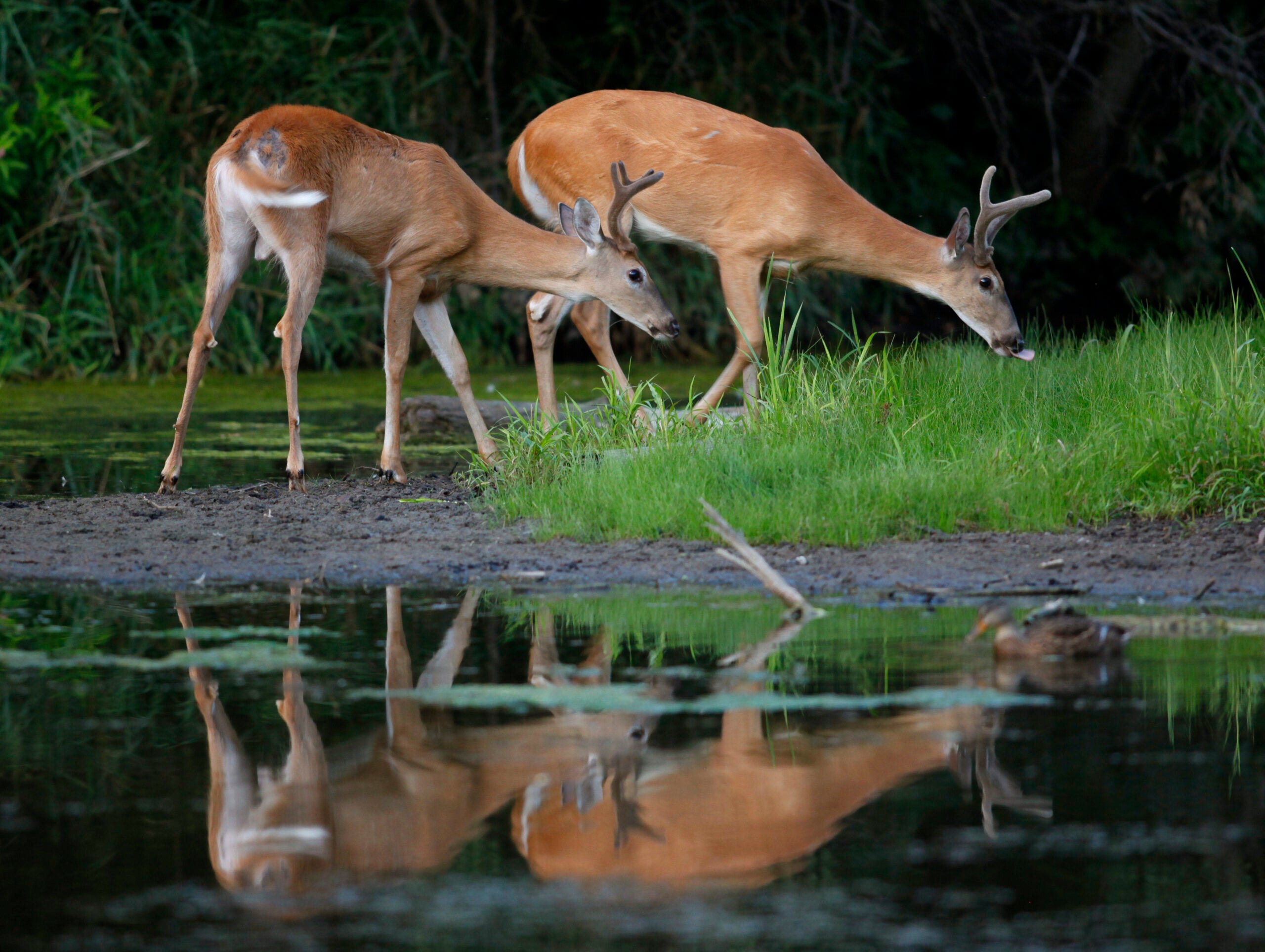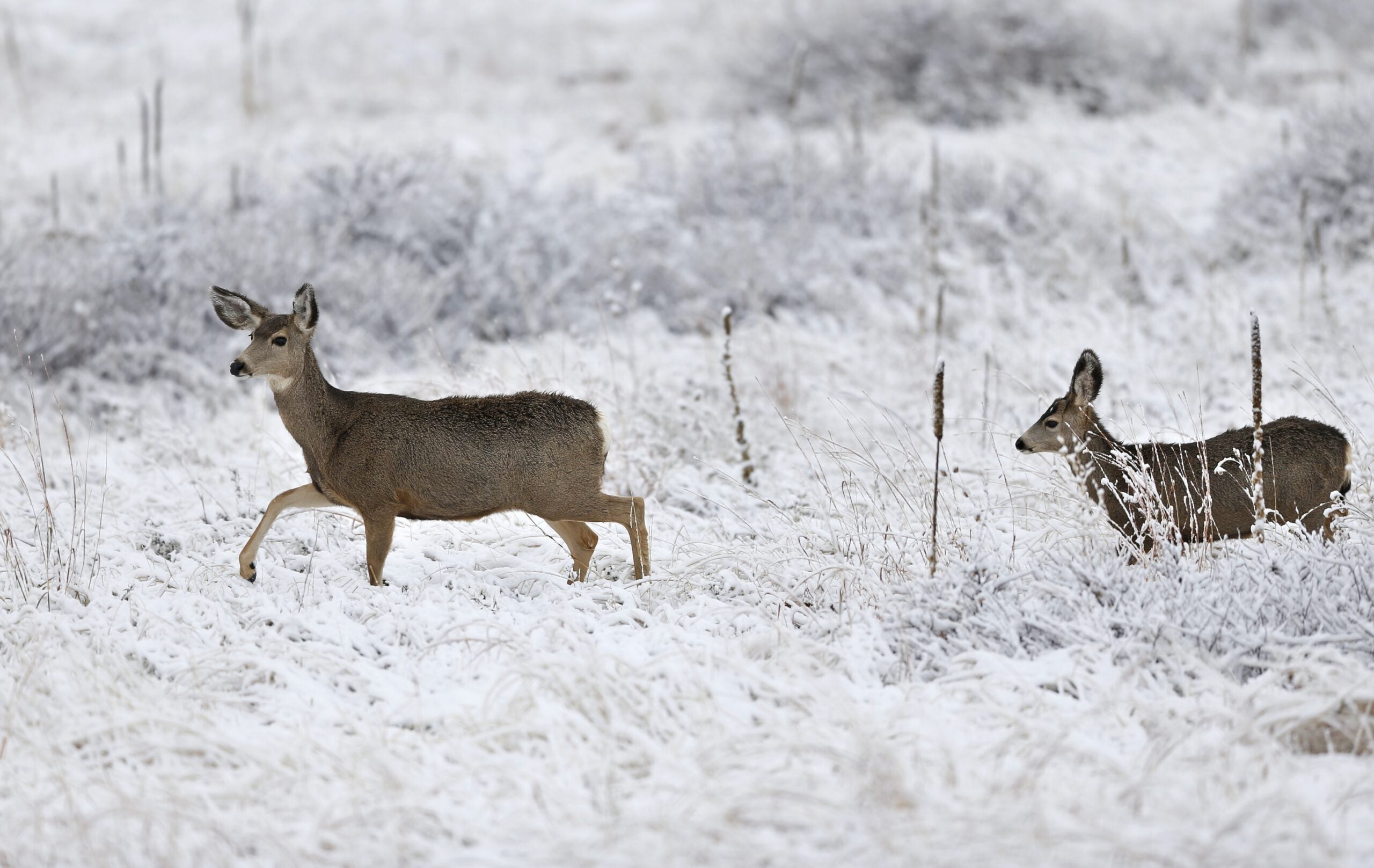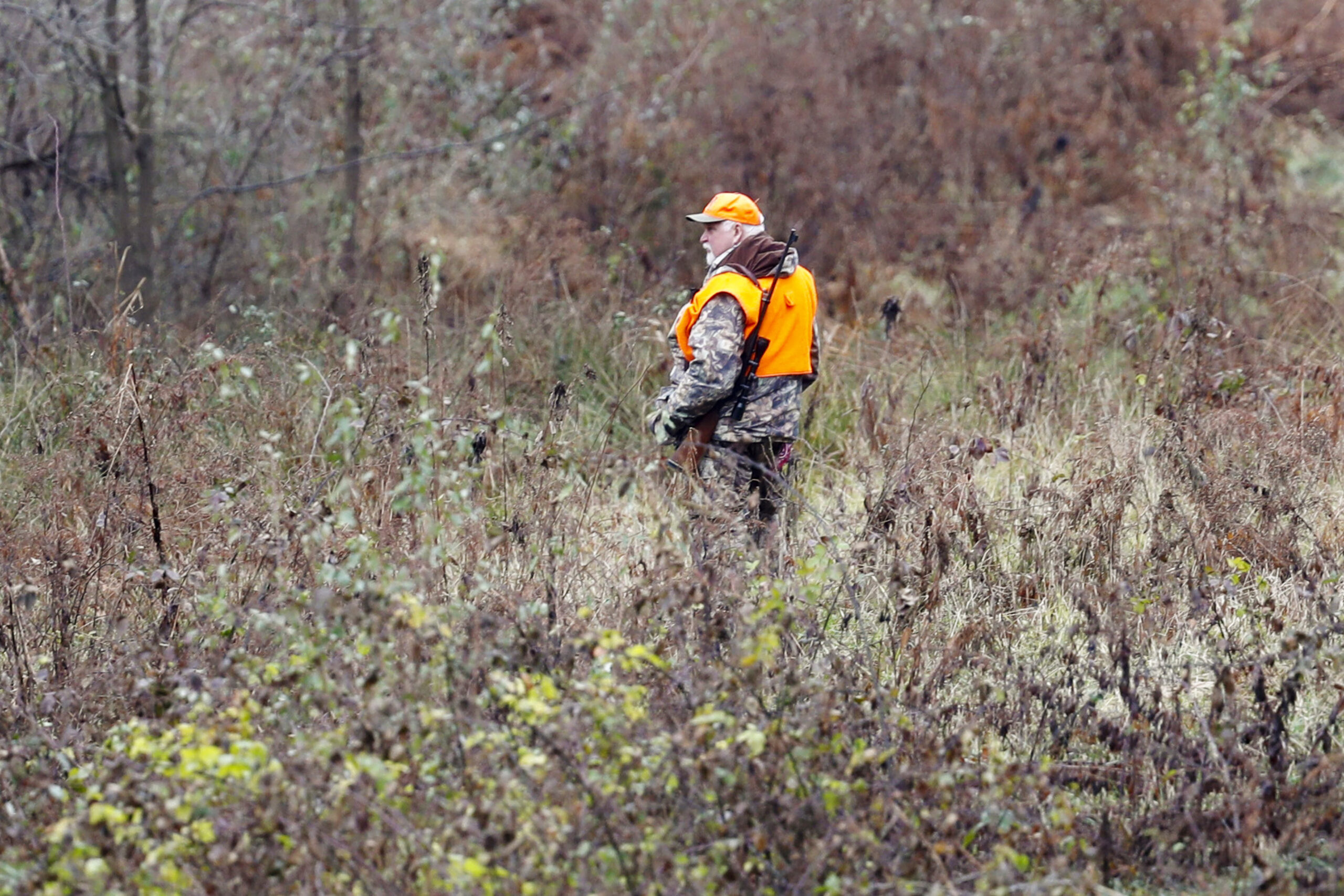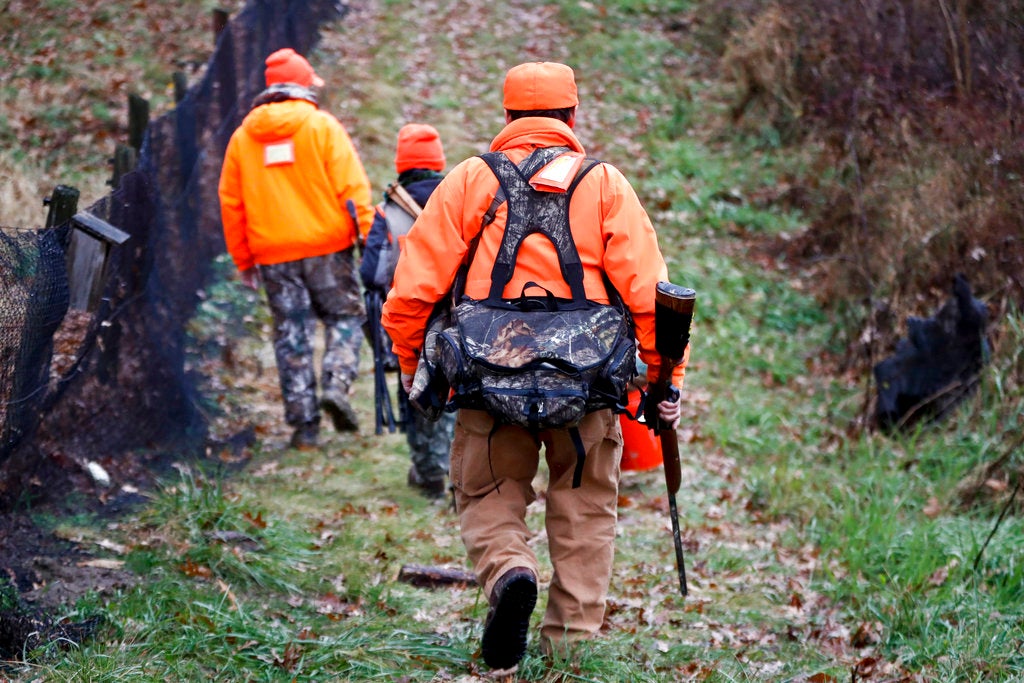Wildlife officials from the Midwest met in Madison on Wednesday to discuss ways to partner on research and management of chronic wasting disease. The deadly deer disease has spread to 26 states and two Canadian provinces since it was first detected in 1967 in Colorado.
Representatives from multiple states, including Minnesota, Michigan and Wisconsin, took part in the two-day conference along with Native American tribes.
Wisconsin Department of Natural Resources Secretary Preston Cole said states and tribes need to work together to combat the fatal illness.
Stay informed on the latest news
Sign up for WPR’s email newsletter.
“We know CWD has been on the landscape for some time. We’ve all been trying to stop it on our own. That has to change,” said Cole. “By working together, by sharing our research, best management practices, we are doing what it takes to help slow down this deadly disease.”
Cole said the meeting represented an “unprecedented” gathering of wildlife officials to collaborate on research and management practices to address CWD, which he hoped would leverage resources and reduce duplication.
CWD is a neurological illness that affects deer, elk and moose. The disease is transmitted by proteins called prions and is spread through animal contact or saliva, urine and feces. The illness is similar to mad cow disease.
The conference touched on the status of research and best management practices. Minnesota DNR Wildlife Research Manager Lou Cornicelli said discussions surrounded the biological and social aspects of addressing the disease, ranging from infection rates to development of rapid tests to regulatory strategies that hunters will accept.
“We know that we can’t be successful if our hunters don’t agree with the regulations or they don’t harvest enough deer or harvest them over enough of a time period to impact the disease transmission and persistence,” said Cornicelli.
Participants also hoped to see a renewed emphasis on multi-state collaboration to understand and better manage the disease, including Chad Stewart, deer, elk and moose management specialist with the Michigan DNR.
“So many times each state is working within their own state guidelines and protocols. It’s really important to step outside of those state boundaries and really focus on what other people are doing,” said Stewart. “It might sound cliché, but we’re certainly stronger together than we are individually.”
Stewart noted that Michigan’s DNR was recently granted $5 million to promote research on CWD. He added the agency has also been using the best management practices recommended by the Association of Fish and Wildlife Agencies to align its response based on the best available science.
Those practices were among recommendations released by researchers Tuesday who called for a national strategy to reduce the risk of exposing humans to CWD and limit its transmission. The recommendations were published in an article within the online journal mBio from the American Society for Microbiology.
The best management practices address issues surrounding carcass disposal and movement of live deer from deer farms, said lead author Dr. Michael Osterholm with the Center for Infectious Disease Research and Policy at the University of Minnesota.
“These have been a particular major problem where animals that are positive are bought and purchased from one area and brought to another area,” said Osterholm.
He urged a strong emphasis on new and enhanced guidelines and regulations around cervid farms and their operation.
Last year, Wisconsin agencies were directed by former Gov. Scott Walker to draft emergency rules on things like transport of live deer and enhanced fencing of farms. Cole, the Wisconsin DNR secretary, noted the agency is focusing on research and operations prior to rule development to manage the spread of CWD.
“If we put forward a rule that’s not based in science, we’ll get criticized for it,” said Cole. “Today’s research is about having a conversation as to where those gaps lie.”
Wisconsin’s deer farm industry has said it’s one of the most regulated industries with no need for additional rules to control the disease’s spread. Some deer farmers have advocated for research into breeding deer that have a genetic resistance to CWD.
Other recommendations outlined by researchers this week include investment in CWD research, heightened surveillance of human prion diseases, and improved cervid testing.
Osterholm said testing should be mandatory for all deer killed in areas where the disease has spread. Last year, there were 4,925 deer tested out of 23,441 harvested in Dane, Iowa, Richland and Sauk counties where the disease is most prevalent, according to their research. He said that puts hunters at risk of consuming meat from deer that would have tested positive for the disease.
“We are constantly being confronted with new information or data and it’s those recent findings that give us more pause for concern about the potential for transmission to other animal species or to humans,” Osterholm said.
The potential for hunters to consume deer that have contracted the disease is of particular concern to the Great Lakes Indian Fish and Wildlife Commission (GLIFWC), said Jonathan Gilbert, director of biological services.
“It has potential to severely affect the exercise of treaty rights by GLIFWC member tribes,” said Gilbert. “We know that when this disease becomes prevalent in an area, people stop hunting and hunting is one of these key activities in the tribes’ treaty rights.”
Gilbert said the commission would like to see development of a live test for CWD to reduce the risk of moving deer that may be positive for CWD to other unaffected areas of the state. In addition, the commission would like to see tests that identify the disease faster and focus on preventing its spread to areas currently unaffected.
The disease, which was first detected in Wisconsin in 2002, now affects 56 out of 72 counties statewide. The Wisconsin DNR has been increasing surveillance efforts statewide and implemented new programs, such as adopt-a-dumpster, to improve testing and carcass disposal.
States have been left to shoulder the costs of CWD research and management as federal funding declined from $14.3 million in 2011 to $1.9 million last year.
The conference will conclude Thursday.
© Copyright 2024 by The Associated Press. All rights reserved. This material may not be published, broadcast, rewritten or redistributed.





